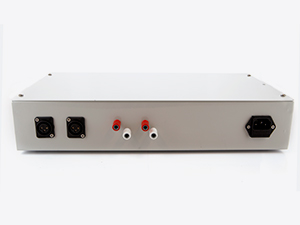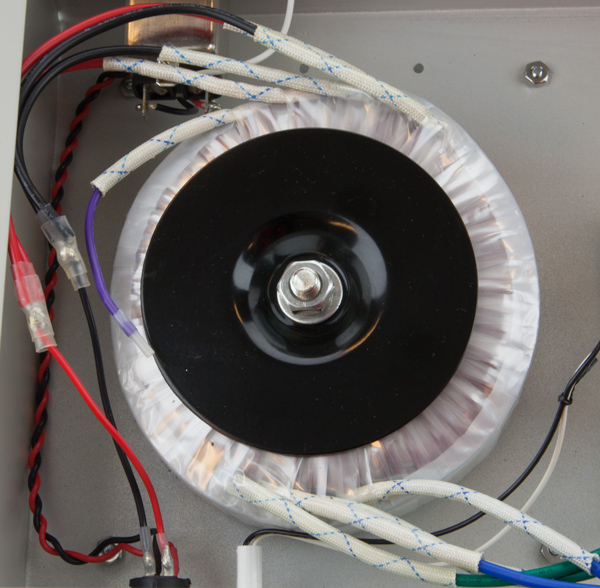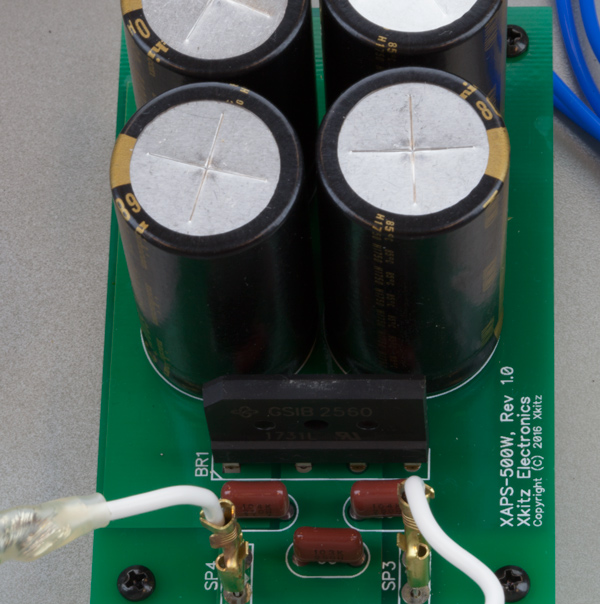Build your own professional-grade audio amplifier is not (very) expensive
- Transfer
We get a stunning stereo sound based on the 3e Audio D-Class board

Translation of an article from the IEEE Spectrum website, by Glenn Zorpet
Several years ago I decided to find out how cheaply you can make the D-class amplifier of audiophile quality. Then I got $ 523.43. I made a decent amp, and the article on the IEEE Spectrum still attracts readers and periodic questions about where to get parts.
Sorry, but the main components have long since disappeared. Therefore, I sent all the sufferers to the sets from Class D Audio , DIY Class D and Ghent Audio . And a couple of months ago, I suddenly wanted to check how much better I could do the amp now, almost ten years later. Part of the motivation was due to the annual listings.The best stereo amplifiers from The Master Switch. The list is dominated by amplifiers priced at $ 1,000 (and ten of them cost more than $ 2,000).
Fashionable audio gadgets - my weakness. But let's put aside the checkbook and get a soldering iron. If you have basic skills in soldering and working with tools - will you be able to drill holes in aluminum sheet? - you can make high quality equipment much cheaper.
In short, the D-Class amplifier works by converting an analog signal into a variable sequence of square pulses of a fixed amplitude. These pulses turn on and off the transistors, and the output of the transistors is converted back to an analog signal, which is louder. When I wrote my first article, the D-Class audio devices were relatively new, and the audiophiles were arguing about whether they could sound as good as AB or A.
Now no one argues about this. There are many Class D amplifiers on the market, and the best of them dominate the top of the lists.
The design and creation of the D-Class amplifier is a praiseworthy venture. If you decide to go this way, I salute you and suggest starting with the wonderful article by Caesar Ciril on the site All About Circuits. But if all you want is the maximum ratio of quality to price, the best strategy would be to carefully select the amplifier module and other components from a huge number of ready-made options. That is what I did. Do not mention it.
The amplifier consists of two basic components: the power supply and the circuit. After a couple of weeks of research and evaluation, I settled on the EAUMT-0050-2-A scheme .D-Class amplifiers from 3e Audio , a company from Shenzhen. It is based on Texas Instruments' excellent TPA3250 amplifier chip , which showed itself well in comparison with D-class amplifiers assembled from individual components.
The TPA3250 can work with speakers at 8 ohms or 4 ohms, and its efficiency is 92%, according to data from TI. It can receive symmetrical input signals (often used in music studios and other professional applications) or one-way (usually used in consumer devices).




Music Composition: The amplifier (at the top) uses XLR connectors (on the left of the photo) for signal input typical of professional equipment. Inside its main parts is a transformer from AnTek Products Corp. (second from above), rectifier board from Xkitz Electronics (third from above) and 3e Audio amplifier module (below) based on Texas Instruments TPA3250.
The test results from site 3e claim that their TPA3250 based board has a non-linear distortion factor + noise ( THD + N ) of 0.0025% at a power of 20 W and a load of 4 Ohms for a signal of 1 kHz. This is insanely small. For comparison, the amplifier D-class nova300 from Peachtree Audiopriced at $ 2,199, announced by The Master Switch website “the best amplifier of this year” has a THD + N index of 0.005%, all other things being equal.
We need to take it critically and understand that it’s impossible to hear the difference between THD + N of 0.0025% and 0.005%. The bottom line is that a sound system consisting of an amplifier based on a 3e board worth $ 49, along with a good DAC and preamp, can produce a sound comparable to a high-end amplifier.
As a power source, I recommend an unregulated audio source from Xkitz Electronics , model XAPS-500W ($ 30). It should be supplied with a current of 22 V from 200 VA transformer from AnTek Products Corp., Model AS-2222 ($ 32). If you prefer a switching voltage regulator instead of a linear voltage regulator, SMPS300RS from Connex Electronic ($ 65, along with a transformer) will be an excellent choice . If you want to save money, there is an HPOO rectifier card on AliExpress for only $ 15. At the other end of the scale is the Eltim PS-UN63RQ module for € 119. Shipping it to the US will cost an extra € 81, so for residents of America this is not an option ( the link provides a complete list of spare parts).
When finished with an amplifier, I connected it to a 30-year-old three-channel speakers from Panasonic, which I often use for checks. The sound from them was so cool that I was amazed. For all the time I listened through these speakers to pieces of 15 different amplifiers, including lamp ones up to $ 1,200. None of them had such a clearness of sound and such an accurate, detailed, and at the same time smooth playback, like the module from 3e with the power source from Xkitz. In my experience, a very small number of amplifiers can find the perfect balance of accuracy, density of bass and overall warmth of sound. And this amplifier succeeded.
The total cost was $ 259.01. Slightly more than half the cost of the previous amplifier, which gave a worse sound, built by me ten years ago. This amount includes $ 37.50 for professional painting the case with powder paint. And I do not recommend skipping this step unless you are a professional in aluminum painting. A high-end amplifier should look the same. But perhaps it will be possible to argue about this somehow.
